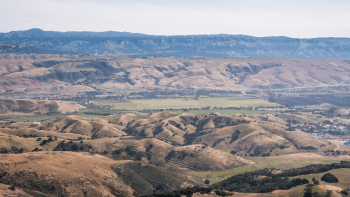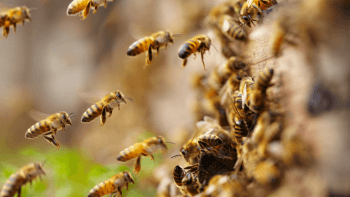Becoming Climate Smart: Natural & Working Lands Element
Since 2018, the City of San José has been working to implement Climate Smart San José (Climate Smart), an initiative to reduce air pollution, save water and improve quality of life. The City of San José partnered with the Santa Clara Valley Open Space Authority to develop a Natural and Working Lands Element (NWL) of Climate Smart San José which emphasizes the importance of preserving open space and local agriculture for the health and climate resilience of the region.

In San José, 65% of the land within the city limits are defined as open spaces, parklands, wildlife habitat, agriculture and open hillsides. These critical landscapes offer numerous benefits that help safeguard the public from natural disasters and extreme weather. Let’s break down the focus areas of the NWL and its benefits to the community at-large:

Natural and Working Lands Preservation and Expansion
As the San José population continues to grow, housing and public infrastructure will become even more important. Through the Natural and Working Lands Element, urban development is thoughtfully considered in a way that’s beneficial for humans, the land and local wildlife. By building communities that are central, walkable and public-transit oriented, urban sprawl is reduced and land for agriculture and wildlife remains undeveloped.

Regenerative Agriculture
Santa Clara Valley’s agricultural landscape improves the local economy, provides important ecosystem services and increases residents’ access to fresh food. Through the NWL Element, the Open Space Authority encourages the implementation of regenerative agricultural practices, where farmers and farmworkers implement stewardship strategies, often informed by traditional indigenous knowledge to work with the land and its natural systems to improve the health of the soil. As a result, their efforts can help reduce carbon emissions, increase carbon sequestration (the act of capturing carbon through natural forms, like soil) and increase water retention.
By supporting regenerative agriculture techniques like cover cropping, managed crop rotation and the use of cattle to graze invasive grassland, the health of the soil will improve and increase both the crops’ and landscapes’ resilience to climate change pressures and extreme events, like drought, flooding and wildfires.
Natural & Working Lands Restoration and Enhancement
Restoration strategies described within the NWL Element are categorized by the types of vegetation that exists within the boundaries of San José, including native grasslands, oak woodlands, wetlands and riparian areas, or the areas around waterways.
• Restoring native grasslands helps to sequester carbon and, due to their deep root systems, retain soil moisture and improve soil health.
• Oak woodlands sequester quite a bit of carbon and also benefit watersheds, improve wildlife habitat and enhance the beauty of San Jose landscapes.
• The restoration of both saline and freshwater wetlands can assist in reducing greenhouse gases through the improvement of plant habitats that sequester carbon in the soil.
• By increasing the density of woody plant species in riparian areas, plant growth improves and more carbon is sequestered.

Urban Greening
Did you know that making urban areas greener can help sequester carbon and reduce the effects of extreme weather? When urban areas intentionally incorporate greenery, they ultimately reduce air and noise pollution, provide more shade for cooling and offer habitat for wildlife. These are known as “Nature-Based Solutions” to climate change and the Natural and Working Lands Element prioritizes these urban greening methods through improvements to parks, urban landscaping and stormwater infrastructure.

Carbon Tracking and Management
Carbon is one of the most impactful greenhouse gases for climate change. When heat from the sun enters the earth’s atmosphere, human-made greenhouse gases prevent the heat from escaping back into space, making the earth warmer. As a result, humans are experiencing extreme weather more regularly, negatively impacting our health and wellness. Tracking carbon and managing carbon outputs provides the data needed to curb greenhouse gases through the development of future policies.
The Natural and Working Lands Element signals a change in the way lands are appreciated throughout the Santa Clara Valley. The benefits provided by open space, hillsides, parks, agriculture and wildlife habitats are instrumental to the future ways in which the region tackles extreme weather and builds climate resiliency. The Open Space Authority is proud of its role in co-authoring the NWL Element and hopes it will help guide actions that safeguard the health of people and wildlife in our community.
Learn more about the Natural & Working Lands Element of Climate Smart San José by clicking here.



